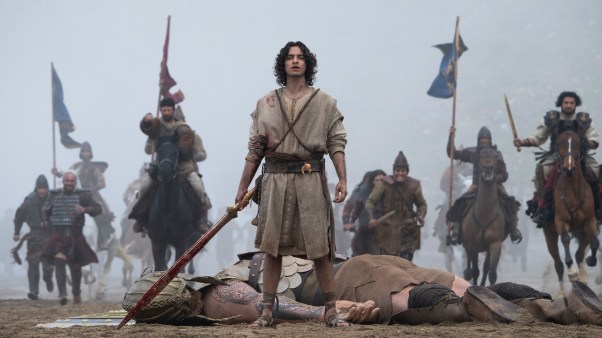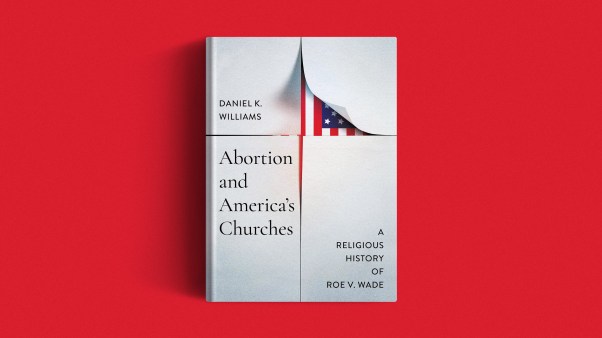When Thanksgiving rolls around this year, students in some U.S. classrooms may have a chance to learn what motivated the Pilgrims to come to America in the first place. There seems to be some confusion over that point. In suburban New York, one young student concluded that the first Thanksgiving occurred “when the Pilgrims gave thanks to the Indians,” according to noted textbook reviewer Paul Vitz of New York University. The student’s interpretation of events is not surprising, given the scant attention textbooks pay to people, places, and events of religious significance.
Yet, despite the past decade’s pitched battles over prayer in schools and creation versus evolution, a consensus about religion and school curricula is developing. It encompasses groups ranging from Norman Lear’s People for the American Way to the National Association of Evangelicals. The education establishment has acknowledged a gap in classroom teaching, and efforts now under way to fill the void include teaching the teachers as well as developing new materials.
A first step involves dispelling myths about what is and is not permitted in the classroom. To address misunderstandings, a broad coalition of academic and religious organizations in 1988 joined in publishing the brochure “Religion in the Public School Curriculum: Questions and Answers” (CT, July 15, 1988, p. 42). The pamphlet explains the difference between teaching “about” religion and inculcating particular beliefs.
Also in 1988, an even broader coalition of national leaders signed the Williamsburg Charter, a document reaffirming the religious-liberty clauses of the First Amendment.
“Living With Deep Differences”
In an attempt to address the neglect of religious-liberty issues in classes, the Washington-based Williamsburg Charter Foundation is currently developing a new curriculum, “Living With Our Deepest Differences,” which is scheduled for publication before the 1990–91 school year begins. The five-unit course, according to its introduction, examines “the guiding principles which enable people of all faiths or none to live together as one nation.” The authors urge fairness, cautioning teachers to convey the lessons in a way that “fosters respect for differences and appreciation for diversity as a source of national strength.”
Coauthor Charles C. Haynes points out, “Our religious differences need to be taken seriously and discussed with integrity. The challenge is to create lessons to bring these values home to students so whatever their faith, they feel included in the discussion as American citizens.”
The Williamsburg Charter Foundation’s executive director, Os Guinness, said the new materials are important in the effort to prepare students to preserve democracy, in part by helping students understand how essential religious liberty is. The curriculum also addresses a broadly recognized need for moral values in schools. “Values clarification hasn’t worked, philosophically or educationally, and there needs to be an answer,” Guinness said. “This is a necessary component of that answer.”
“Living With Our Deepest Differences” has been tested in 150 classrooms in five states: California, Maryland, North Carolina, Michigan, and New York. It is intended for use at three grade levels: fifth, eighth, and eleventh. Its fifth and final draft was in the process of editorial review as this article went to press.
The curriculum appears to have attracted opposition only on the far reaches of the Left and Right, with some fearing it will promote Christianity, and others alarmed about its potential for presenting divergent views as equally true.
Hardly Headstrong
American students are notorious for their low scores on tests of general knowledge about school subjects. A humanities professor in North Carolina, Warren A. Nord, decided to test for religious literacy. He had reasonably high hopes: the 126 students he tested were enrolled in college classes on religion, and all but four of them claimed affiliation with some branch of Christianity. Not a single student passed. Among Nord’s findings, reported in Religion & Public Education:
• 30 percent could paraphrase the first of the Ten Commandments;
• 33 percent could identify Passover;
• None could identify the “social gospel”;
• 9 percent could name the two major divisions of Islam;
• Zionism meant nothing to all but 14 percent;
• 19 percent knew that Peter is believed by Catholics to have been the first pope;
• 18 percent could place the Protestant Reformation in the correct century.
Sins Of Omission
Rigorous reviews of textbooks in the fields of history, social studies, biology, economics, and home economics document how meagerly information about religion is rationed. New York University’s Vitz reviewed dozens of books used widely in public schools and found that “for all practical purposes, religion is hardly mentioned as existing in America for the last seventy-five to one hundred years” (see p. 22, this issue).
Similarly, a review by Warren A. Nord of the University of North Carolina (Chapel Hill) reveals gaping holes. In world history texts, he found, “Jesus receives, on average, four paragraphs, or less than half the space of Eleanor of Aquitaine in one text, and of Joseph Stalin in another.”
By presenting only secular, scientific views of classroom studies, Nord believes textbook publishers violate the very neutrality they are supposed to uphold. As a result, he has written, “Religion is gently exiled, in effect, to the realm of private superstition.”
However, there is evidence that textbooks are beginning to change, in part because state school boards are requiring it. According to Charles Haynes, the leader is California, which alone accounts for 11 percent of the textbook market. There, a state education document “mandates much more inclusion of religion throughout the social science curriculum,” Haynes said. “That has pushed many textbook publishers to try to include more about religion, and we’re beginning to see that happen.”
Support has come as well from the Association for Supervision in Curriculum Development (ASCD), which is publishing Haynes’s book for teachers, entitled Religion in American History: What to Teach and How.
Teaching The Teachers
A number of efforts aim toward preparing teachers to use new materials correctly and confidently. Nord has offered week-long seminars covering religion and public-school policy since 1987. He is conducting additional seminars with such subject matter as the role of religion in American history and literature, as well as Judaism and Christianity in Western history and literature. Other training sessions are also meeting:
• The Americans United Research Foundation in Silver Spring, Maryland, this year is holding its fourth of five summer institutes directed mainly toward social-studies teachers.
• John Simmons, at Western Illinois University, has developed a slide show and narrative to illustrate religious diversity throughout Illinois and stimulate interest on the part of high-school teachers.
• At the University of Florida at Gainesville, Austin Creel has been using federal grants to conduct summer institutes for high-school teachers on Judaism and Hinduism; Buddhism and Christianity; the study of religion in America; and Islam and Judaism.
Nord is encouraged by the prospects for more accurate classroom portrayals of history, literature, and a host of other subjects. “Our experience has led me to conclude that the role of religion in public education is, in the end, much less controversial than many people suppose—at least if it is done right,” he said. “Doing it right means doing it fairly; being open and sensitive to the range of religious and secular ways of thinking about an issue.”
By Beth Spring.
CAPITAL CURRENTS
Capital Currents is a periodic feature highlighting news from CT’s Washington office.
Bible clubs debated
The U.S. Supreme Court heard oral arguments last month about whether public high schools have the right to prevent students from forming a voluntary Christian Bible club if other clubs are permitted. At issue is the constitutionality of the 1984 Equal Access Act, which says that schools having a “limited open forum” for student clubs may not prohibit clubs with religious content.
Attorney Jay Sekulow, representing the Christian students who wanted to form the club, told the Court that the Westside Community School District in Omaha, Nebraska, discriminated against his clients because of the religious content of their club. He noted that the school allowed a chess club and a scuba club.
Allen Daubman, attorney for Westside Community Schools, argued that the act does not apply because all their clubs are directly related to their curriculum and not “extra-curricular.” The chess club was related to math class, and the scuba club to physical education, he argued.
Personnel matters
Several evangelicals are included on the President’s Drug Advisory Council: former Dallas Cowboys coach Tom Landry, gospel singer Sandi Patti, former American Red Cross president Richard Schubert, and federal judge Paul Pressler, a leader in the Southern Baptist Convention. The council will help promote the administration’s drug policy.
Dark days for families?
The Family Research Council is warning that the 1990s could be “a devastating decade for many of America’s children and families.” In a memo circulated to politicians and media in Washington, D.C., council president Gary Bauer cited several “negative social trends,” such as rising divorce rates, illegitimacy, and parental absence. “Barring a reversal of these trends, more and more children will be denied the opportunity to grow up in an intact, two-parent family,” Bauer said. The memo outlined a three-point public-policy agenda to help strengthen family ties, stimulate family togetherness, and soften family taxes.
Heaven on earth
The Maharishi Mahesh Yogi, perfecter of transcendental meditation and other “enlightenment” programs, announced at a Washington press conference that “heaven on earth” is right around the corner. Speaking via telephone from India, the Maharishi attributed world trends toward freedom to the increased practice of transcendental meditation, which “creates coherence, harmony, and peace.” “I invite all the leaders of the world to raise their administration of government to be in perfect alliance with the administration of nature’s government,” the Maharishi said, adding that such an alliance will bring “perfection in every area of life.”










